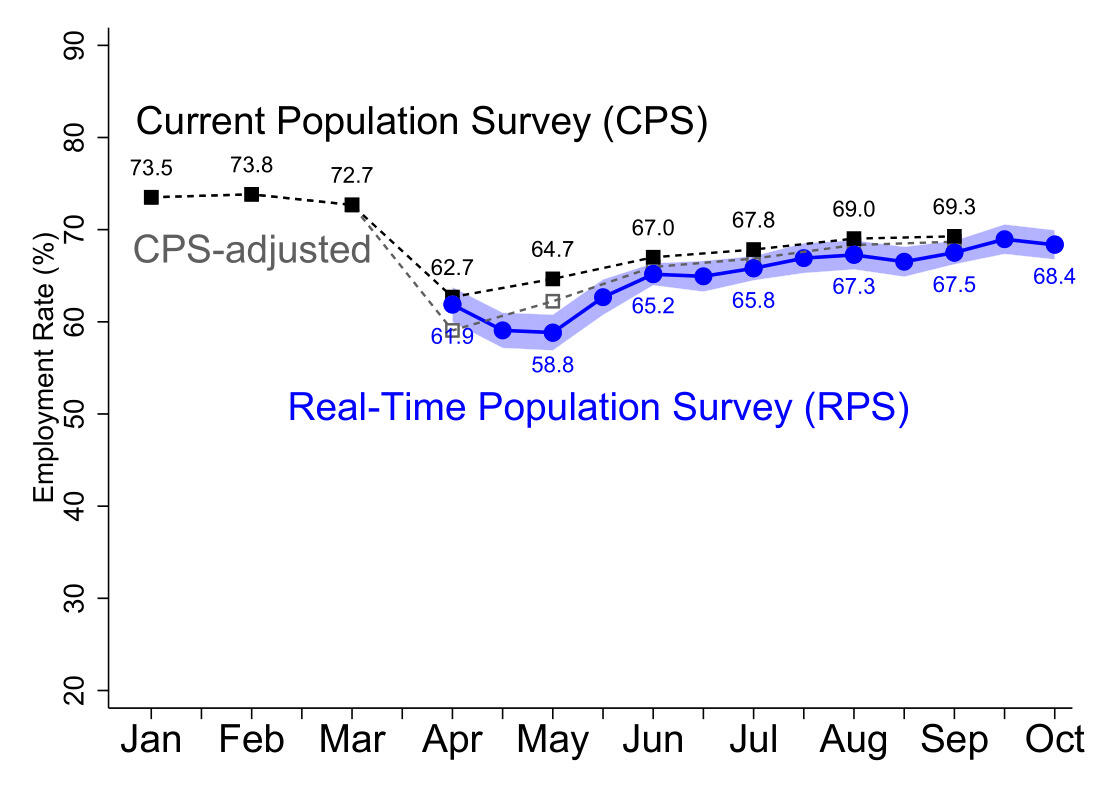
Oct. 26, 2020
Labor market continues slow recovery
Share this story
The labor market continued its recovery the week of Oct. 11-17, but at a slower pace than at the start of the recovery, according to a report by economists from Virginia Commonwealth University and Arizona State University.
“The latest [Real-Time Population Survey] results show that, since April, employment has recovered two-thirds of the way back to the pre-pandemic level,” said Adam Blandin, Ph.D., an assistant professor in the VCU School of Business, who conducts the biweekly Real-Time Population Survey with Alexander Bick, Ph.D., an associate professor of economics at Arizona State.
“In early October, 68.4% of working-age adults were employed,” Blandin said. “This is a large improvement compared to roughly 60% employment in April. But the current rate is still far below the 73.8% employment rate from February, just prior to the pandemic.”
Blandin and Bick started the Real-Time Population Survey out of a desire to use their skills as economists to help policymakers, reporters, analysts and the public during the COVID-19 pandemic. Since launch, their research has been cited widely in national publications such as The Wall Street Journal, Bloomberg, Business Insider, Forbes, The New York Times and The Washington Post, and has drawn attention from notable economists worldwide.
The Real-Time Population Survey closely follows the methodology of the U.S. Bureau of Labor Statistics’ Current Population Survey. Blandin and Bick have made improvements with each survey wave and plan to continue refining their methodology going forward.
The latest survey results reflect the week of Oct. 11-17. Other key findings show that earnings have also increased relative to the spring. Among those who were employed in February, 37.4% reported a loss in earnings in early April. This share declined to 27.2% in the most recent survey, indicating that some of the earnings losses suffered early on in the pandemic were temporary in nature.
The Real-Time Population Survey is conducted in collaboration with the Federal Reserve Bank of Dallas. The results from this survey do not represent official forecasts or views of the Federal Reserve Bank of Dallas, its president, the Federal Reserve System or the Federal Open Market Committee.
Subscribe to receive future results at https://sites.google.com/view/covid-rps/.
Subscribe to VCU News
Subscribe to VCU News at newsletter.vcu.edu and receive a selection of stories, videos, photos, news clips and event listings in your inbox.







